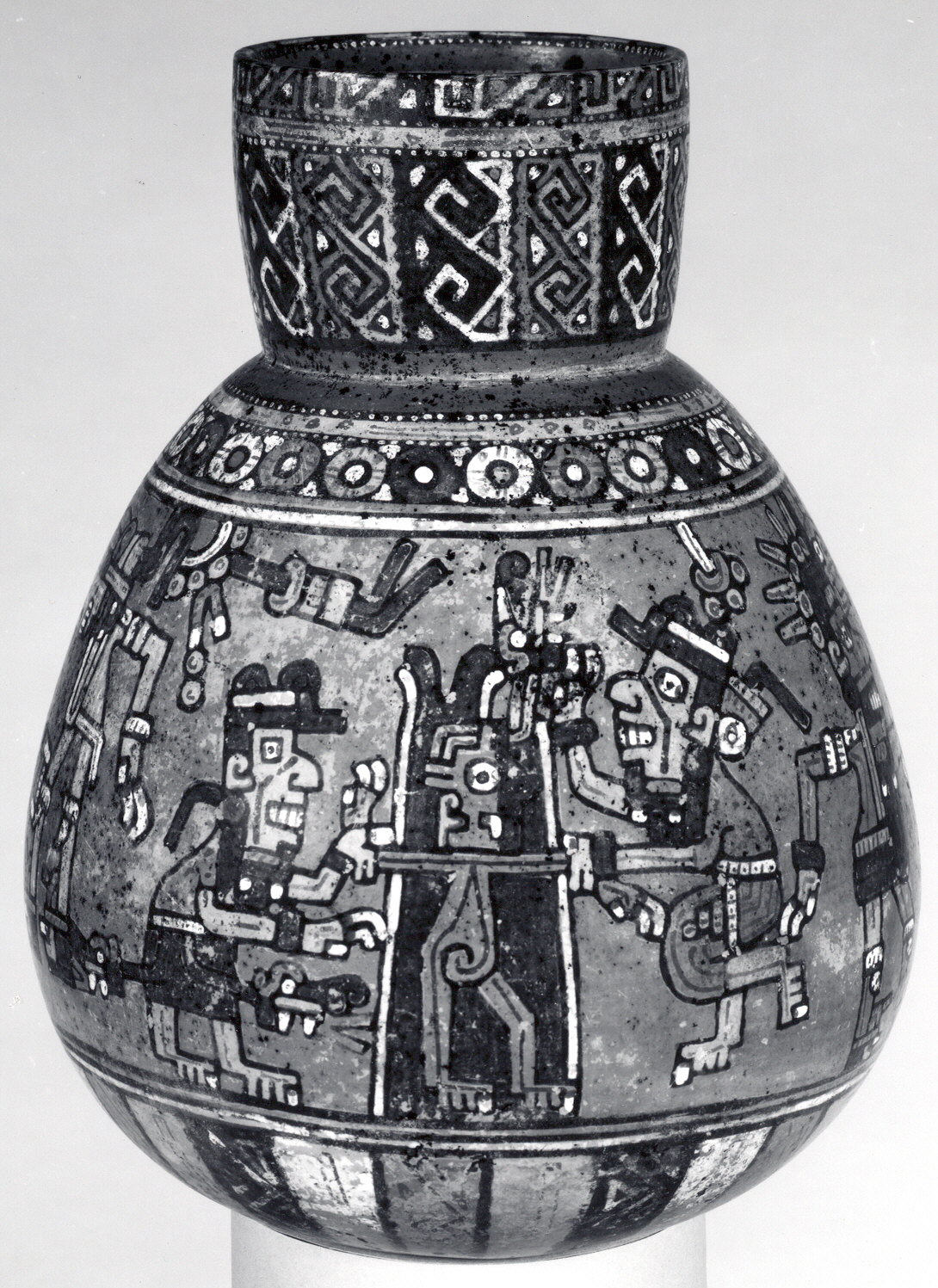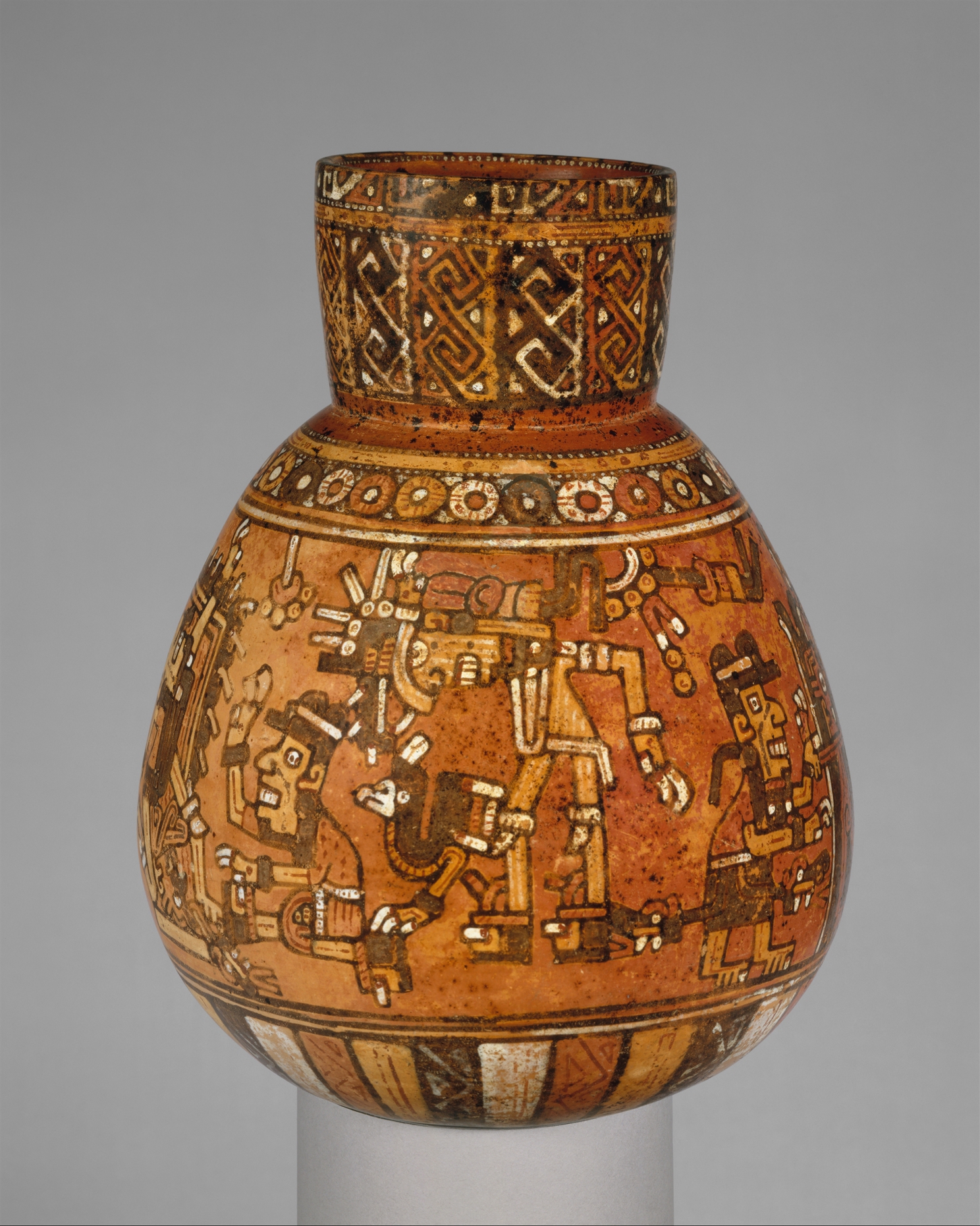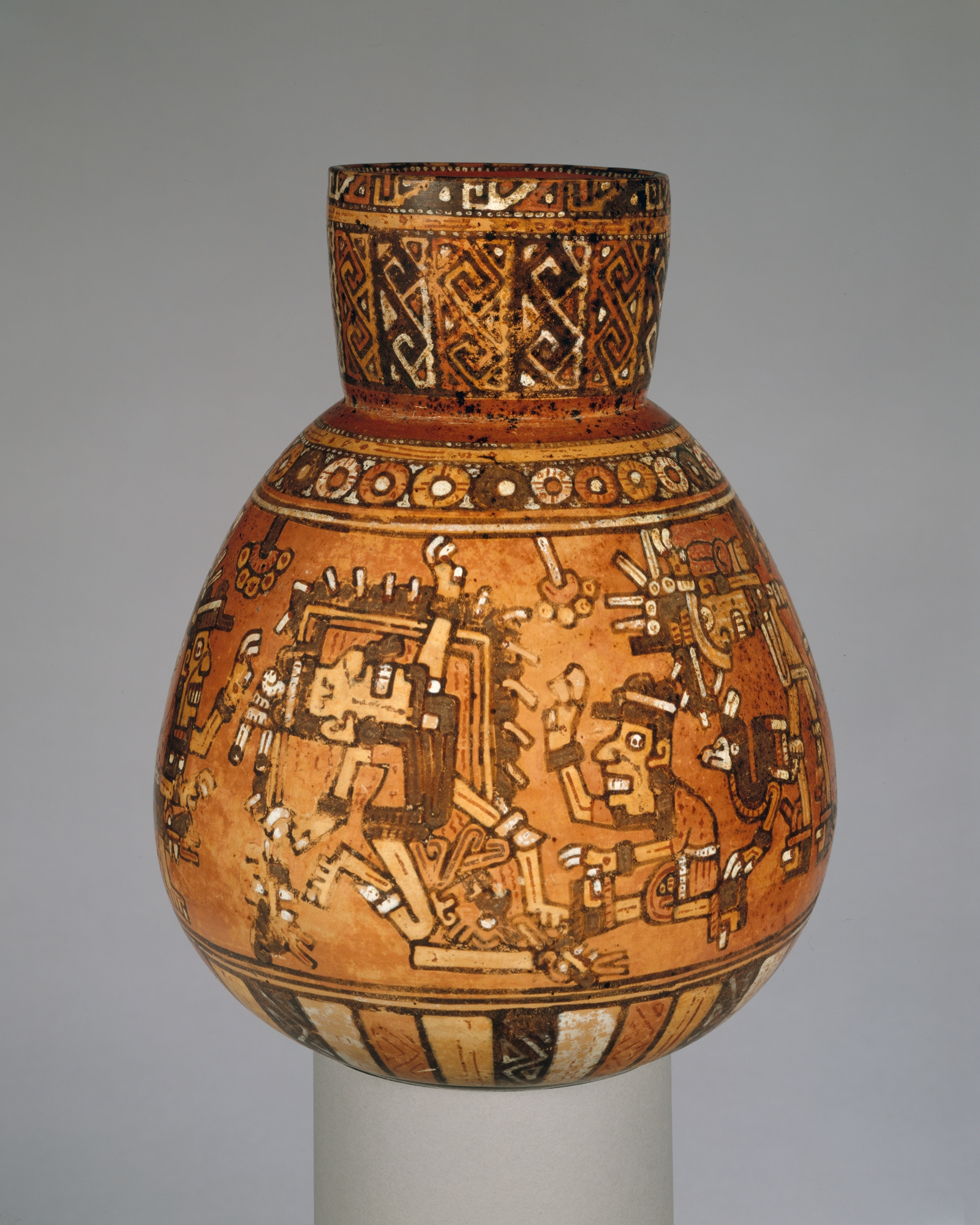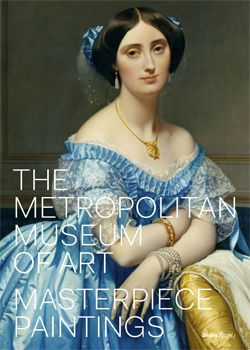Jar with Ritual Scene
Not on view
During the last few centuries prior to the Spanish conquest, ceremonial vessels in Mexico had simple forms with large surfaces to which complex decoration could be applied. On this vessel, red extends over the entire surface, including the straight-sided neck and base, and over it the designs are in dark brown, white, red, and orange outlined in black. A multifigural scene involving nine individuals in profile engaging in different actions appears on the chamber of the jar. The postures of the figures vary, and the three males are distinguished from the females by size, costume, and attributes. Four of the five women wear their hair bound in two topknots held with a white band. The fifth female is shown kneeling in an enclosure, her head thrown back and her eye closed. It has been suggested that this figure portrays a woman who had died during childbirth and that the scene may relate to the myth of the birth of Quetzalcóatl, the quasi-historical ruler-priest of the ancient city of Tula whose mother had died during parturition.
Although the vessel is said to have come from Nayarit in western Mexico, its rich polychrome decoration is strongly influenced by the geometric, vividly colored painting style found primarily on ceramics and in pictorial manuscripts in central Mexico during this time.
This image cannot be enlarged, viewed at full screen, or downloaded.
This artwork is meant to be viewed from right to left. Scroll left to view more.









